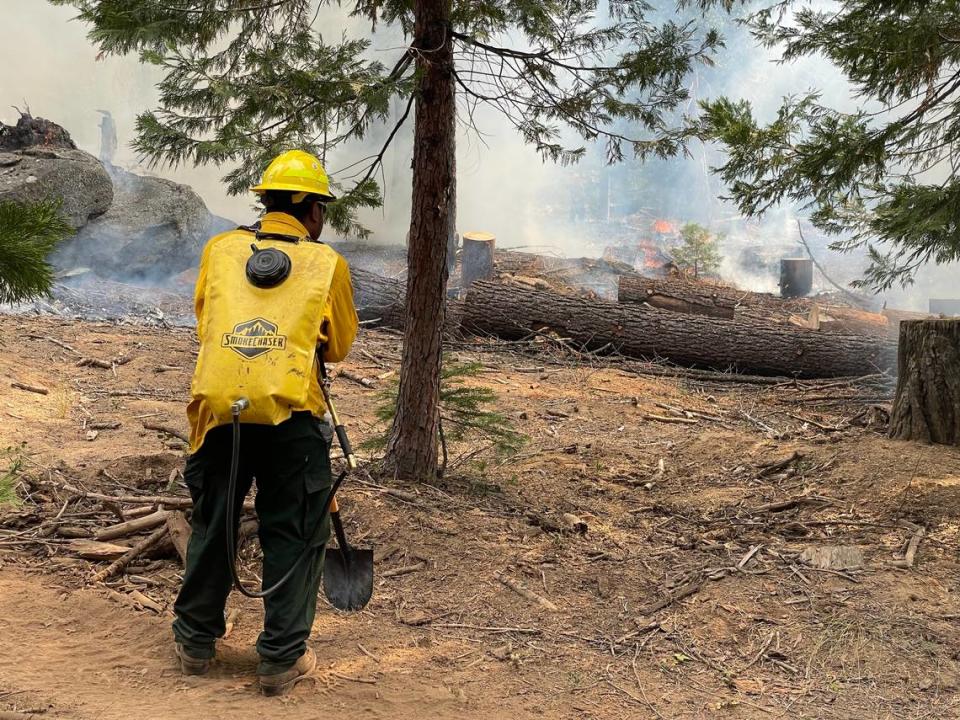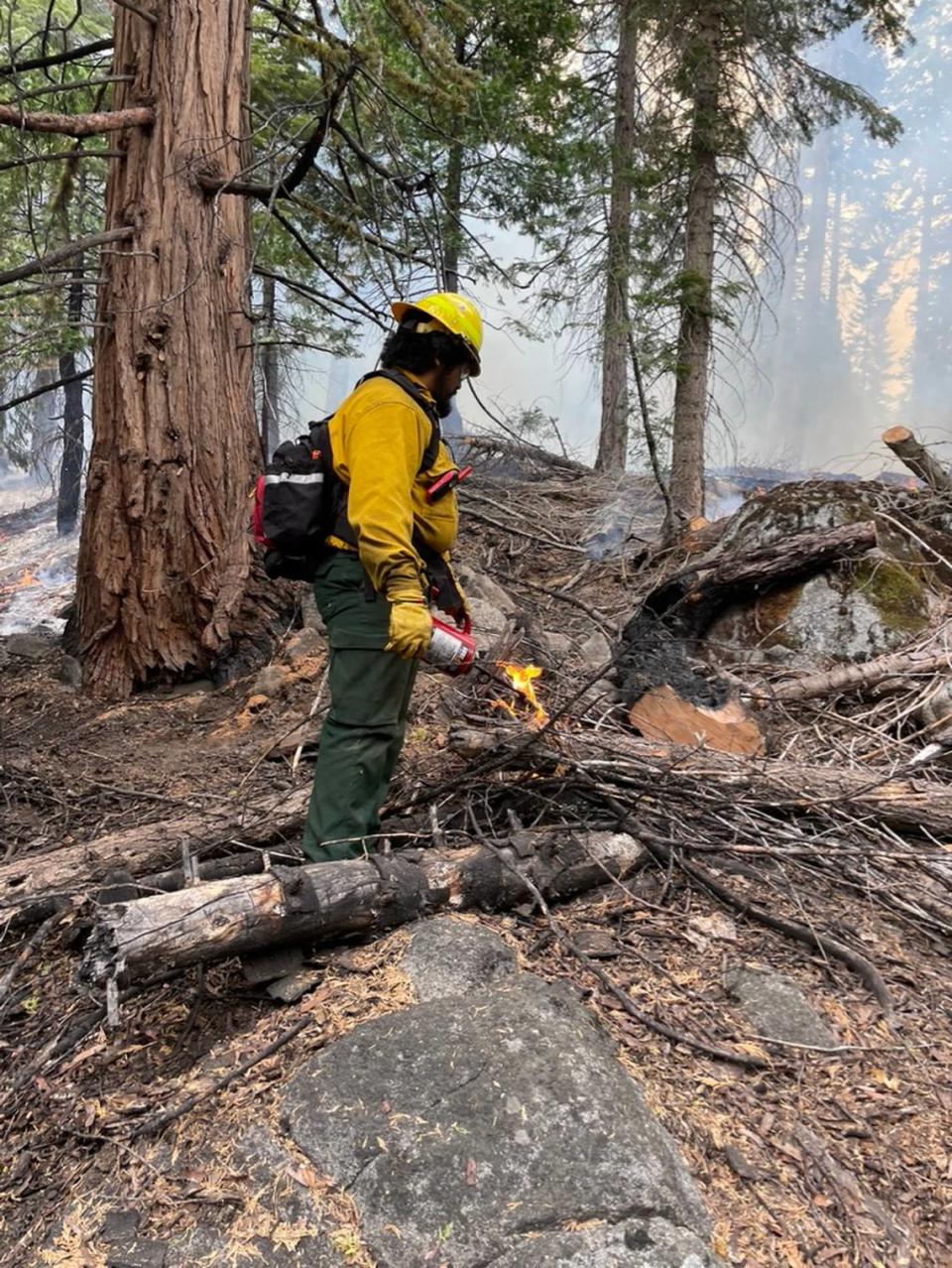Smoky air fills Sierra forests near Fresno. Here’s why that is a good thing | Opinion
Sierra forests east of Fresno have burned in numerous locations this fall.
Just in a way that’s beneficial and restorative to people and the environment rather than harmful and destructive.
Since the end of September, when cooler temperatures arrived, the source of nearly all the smoky mountain air reported to authorities by residents and visitors has been prescribed fire. With a wide array of government agencies and private organizations taking part.
Here’s a rundown:
● Sierra National Forest crews burned piles of forest debris covering more than 100 acres along Huntington Lake Road — areas scorched by the Creek Fire — and outside North Fork at Jackass Meadow.
Opinion
● The Sequoia National Forest burned piles at several locations along Highway 180 and in the Giant Sequoia National Monument at Indian Basin Grove, Hume Lake and Big Meadows.
● Cal Fire conducted prescribed burns at Sequoia and Wilsonia, a privately owned, 100-acre village near Grant Grove in Kings Canyon National Park.
● Southern California Edison, the electricity provider, burned a portion of its 20,000 forested acres around Shaver Lake.
● A newly formed group called the Sierra-Sequoia Burn Cooperative set prescribed fires at two privately owned sites near Dinkey Creek, including Camp El-O-Win.
Why has prescribed fire suddenly become all the rage? (Apologies for the bad pun.) It’s due to a combination of factors, including increased government funding, favorable weather, new laws that provide liability protection and, lastly, societal acceptance.
“Our social license to have more prescribed fire has really increased over the last couple years,” said Len Nielson, Cal Fire’s staff chief for prescribed fire and environmental protection.
“It’s increased because of all the awareness and training and the public information being put out there that prescribed fire is an important tool to prevent catastrophic wildfire.”

Creek Fire shows benefits
Fresno County residents received an education in the value of prescribed fire in 2020, when the Creek Fire largely spared Shaver Lake (including the village) in no small part due to decades of burning by SoCal Edison foresters and other more recent fuels-reduction projects.
Besides reducing the threat to homes and properties, prescribed fire benefits the environment by improving wildlife habitat, recycling soil nutrients, lessening the spread of pest insects and eradicating invasive plant species.
Smoke is really the only downside, though no prescribed burn exceeding 10 acres in California can occur without the authorization of the local air pollution control district.
“Weather and wind conditions have really been favorable this year,” Nielson said. “We’re going to burn a lot more than we have in the past.”
Among local efforts, the Sierra-Sequoia Burn Cooperative is the newest and most unique. The group is a partnership between four Native American tribes (Big Sandy Rancheria, Cold Springs Rancheria, the Dunlap Band of Mono Indians, and North Fork Rancheria), the Sierra Foothill Conservancy, UC Cooperative Extension, several private landowners, fire practitioners and local researchers.
On consecutive October weekends, the SSBC conducted the first prescribed burn on private property in the southern Sierra — 45 acres at Forked Meadow near the Dinkey Creek campground — with a state-certified burn boss.
“We’re not trying to make everything in the forest black,” explained Jared Aldern, a fire historian and author who serves as the group’s co-lead. “We’re trying to reduce the fuels, and if the fire we set skips over a certain stand of trees, that’s OK.”

Laws ease liability fear
Private landowners are more willing to employ prescribed fire now that the state passed new laws that altered the liability standards and set aside a $20 million liability fund ($2 million per incident) in the rare event one gets out of control. Which, Nielson said, occurs “less than 2%” of the time.
The new laws, he added, “really opened the door for certified burners to do more work” and for landowners to avoid getting stuck with a big bill for firefighting costs and damages to their properties and those of neighbors.
In 2020, following the largest wildfire year in California’s recorded history, state and federal officials committed to treating a million acres of forest annually via prescribed burns and other methods by 2025.
Their combined progress can be tracked in the beta version of the recently launched California Wildfire and Landscape Interagency Treatment Dashboard, which illustrates “landscape resilience treatments” throughout the state. Roughly 751,000 acres have been treated so far this year, including more than 96,000 acres with controlled burns.
Nielson, who used to live near Oakhurst, estimated it will take more than a decade at the current pace before the state’s forests are back in order.
“It’s going to be a great future going forward,” the Cal Fire official said. “But it’s not quick, it’s not easy and we are going to be inconvenienced.”
That inconvenience will mainly be felt by mountain residents and recreationists who have to put up with smoky days in the fall. But there should be a huge payoff down the line.
“People remember what the forest was like 40 years ago, keeping in mind that’s after more than 100 years of fire suppression,” Nielson said. “Now try to imagine what it was like when your grandfather was out there with his grandfather.
“That’s what we’re going for … and while we have a little bit of discomfort and annoyance now, that resource will be renewed for generations.”

